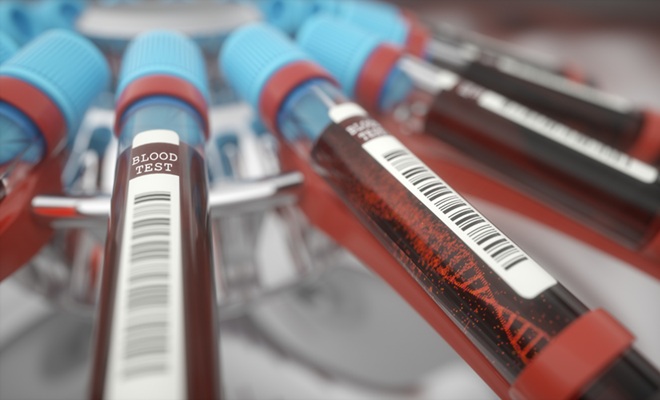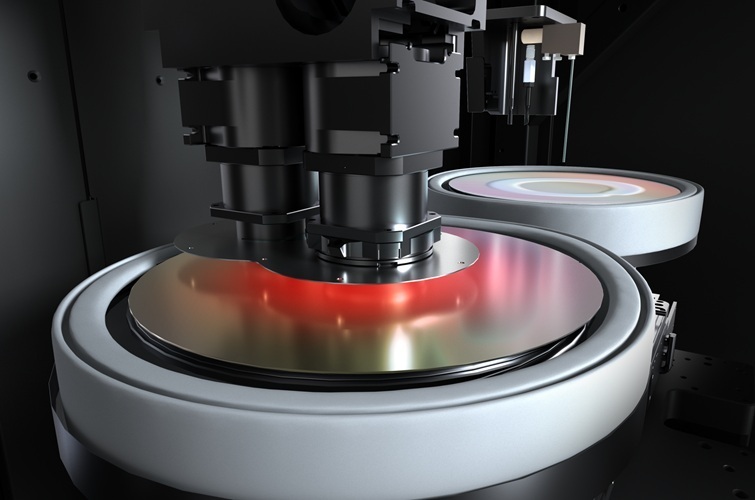Prolonged RBC Storage before Transfusion Increases Extravascular Hemolysis
|
By LabMedica International staff writers Posted on 02 Feb 2017 |
Red blood cell transfusion, the most common procedure performed on hospitalized patients, is an indispensable component of modern medicine and establishing an adequate blood supply depends on the ability to store donated red cells safely.
Some countries have limited the maximum allowable storage duration for red cells to five weeks before transfusion, while in the USA, red blood cells can be stored for up to six weeks, but randomized trials have not assessed the effects of this final week of storage on clinical outcomes.
Scientists at the Columbia University Medical Center and their colleagues randomly assigned a group of 60 healthy volunteers to receive a unit of red blood cells that had been stored for 1, 2, 3, 4, 5, or 6 weeks. The volunteers were then monitored for 20 hours after transfusion. Chromium-51 (51Cr) post transfusion red cell recovery studies were performed and laboratory parameters measured before and at defined times after transfusion.
Routine laboratory parameters were measured and transferrin saturation and total iron binding capacity were calculated from the measured serum iron and unbound iron-binding capacity. Nontransferrin-bound iron was measured using an ultrafiltration assay and this method correlated well with other techniques. Plasma-free hemoglobin was measured by a modified cyanomethemoglobin method. Commercial enzyme-linked immunosorbent assay (ELISA) kits were used to measure Hepcidin and interleukin -6.
The authors found that extravascular hemolysis after transfusion progressively increased with increasing storage time. Longer storage duration was associated with decreasing post-transfusion red cell recovery, decreasing elevations in hematocrit, and increasing serum ferritin. After six weeks of refrigerated storage, transfusion was followed by increases in area under the curve (AUC) for serum iron, transferrin saturation, and nontransferrin-bound iron as compared with transfusion after one to five weeks of storage. Within hours after transfusion, seven of the nine volunteers who received the 6-week-old blood could not appropriately metabolize the damaged cells, thereby releasing large amounts of iron into their bloodstream.
Eldad A. Hod, MD. Assistant Professor of Pathology and senior author of the study said, “Based on the amount of iron circulating in the blood of the volunteers who received six-week-old blood, we'd predict that certain existing infections could be exacerbated. It's estimated that up to 10% to 20% of blood units used for transfusions have been stored for more than five weeks, so the number of patients who are likely to receive a unit of very old blood is substantial.” The study was published in the January 2017 issue of the Journal of Clinical Investigation.
Some countries have limited the maximum allowable storage duration for red cells to five weeks before transfusion, while in the USA, red blood cells can be stored for up to six weeks, but randomized trials have not assessed the effects of this final week of storage on clinical outcomes.
Scientists at the Columbia University Medical Center and their colleagues randomly assigned a group of 60 healthy volunteers to receive a unit of red blood cells that had been stored for 1, 2, 3, 4, 5, or 6 weeks. The volunteers were then monitored for 20 hours after transfusion. Chromium-51 (51Cr) post transfusion red cell recovery studies were performed and laboratory parameters measured before and at defined times after transfusion.
Routine laboratory parameters were measured and transferrin saturation and total iron binding capacity were calculated from the measured serum iron and unbound iron-binding capacity. Nontransferrin-bound iron was measured using an ultrafiltration assay and this method correlated well with other techniques. Plasma-free hemoglobin was measured by a modified cyanomethemoglobin method. Commercial enzyme-linked immunosorbent assay (ELISA) kits were used to measure Hepcidin and interleukin -6.
The authors found that extravascular hemolysis after transfusion progressively increased with increasing storage time. Longer storage duration was associated with decreasing post-transfusion red cell recovery, decreasing elevations in hematocrit, and increasing serum ferritin. After six weeks of refrigerated storage, transfusion was followed by increases in area under the curve (AUC) for serum iron, transferrin saturation, and nontransferrin-bound iron as compared with transfusion after one to five weeks of storage. Within hours after transfusion, seven of the nine volunteers who received the 6-week-old blood could not appropriately metabolize the damaged cells, thereby releasing large amounts of iron into their bloodstream.
Eldad A. Hod, MD. Assistant Professor of Pathology and senior author of the study said, “Based on the amount of iron circulating in the blood of the volunteers who received six-week-old blood, we'd predict that certain existing infections could be exacerbated. It's estimated that up to 10% to 20% of blood units used for transfusions have been stored for more than five weeks, so the number of patients who are likely to receive a unit of very old blood is substantial.” The study was published in the January 2017 issue of the Journal of Clinical Investigation.
Latest Hematology News
- New Scoring System Predicts Risk of Developing Cancer from Common Blood Disorder
- Non-Invasive Prenatal Test for Fetal RhD Status Demonstrates 100% Accuracy
- WBC Count Could Predict Severity of COVID-19 Symptoms
- New Platelet Counting Technology to Help Labs Prevent Diagnosis Errors
- Streamlined Approach to Testing for Heparin-Induced Thrombocytopenia Improves Diagnostic Accuracy
- POC Hemostasis System Could Help Prevent Maternal Deaths
- New Test Assesses Oxygen Delivering Ability of Red Blood Cells by Measuring Their Shape
- Personalized CBC Testing Could Help Diagnose Early-Stage Diseases in Healthy Individuals
- Non-Invasive Test Solution Determines Fetal RhD Status from Maternal Plasma
- First-Of-Its-Kind Smartphone Technology Noninvasively Measures Blood Hemoglobin Levels at POC

- Next Gen CBC and Sepsis Diagnostic System Targets Faster, Earlier, Easier Results
- Newly Discovered Blood Group System to Help Identify and Treat Rare Patients
- Blood Platelet Score Detects Previously Unmeasured Risk of Heart Attack and Stroke
- Automated Benchtop System to Bring Blood Testing To Anyone, Anywhere
- New Hematology Analyzers Deliver Combined ESR and CBC/DIFF Results in 60 Seconds
- Next Generation Instrument Screens for Hemoglobin Disorders in Newborns
Channels
Clinical Chemistry
view channel
New Method Uses Pulsed Infrared Light to Find Cancer's 'Fingerprints' In Blood Plasma
Cancer diagnoses have traditionally relied on invasive or time-consuming procedures like tissue biopsies. Now, new research published in ACS Central Science introduces a method that utilizes pulsed infrared... Read more
Carbon Nanotubes Help Build Highly Accurate Sensors for Continuous Health Monitoring
Current sensors can measure various health indicators, such as blood glucose levels, in the body. However, there is a need to develop more accurate and sensitive sensor materials that can detect lower... Read moreMolecular Diagnostics
view channel
Gene-Based Blood Test Accurately Predicts Tumor Recurrence of Advanced Skin Cancer
Melanoma, an aggressive form of skin cancer, becomes extremely difficult to treat once it spreads to other parts of the body. For patients with metastatic melanoma tumors that cannot be surgically removed... Read more
Blood Test Could Identify Patients at Risk for Severe Scleroderma
Systemic sclerosis, also known as scleroderma, causes the hardening of the skin and connective tissues. In many cases, the disease can also damage vital organs, including the heart, kidneys, lungs, and... Read moreImmunology
view channel
Stem Cell Test Predicts Treatment Outcome for Patients with Platinum-Resistant Ovarian Cancer
Epithelial ovarian cancer frequently responds to chemotherapy initially, but eventually, the tumor develops resistance to the therapy, leading to regrowth. This resistance is partially due to the activation... Read more
Machine Learning-Enabled Blood Test Predicts Immunotherapy Response in Lymphoma Patients
Chimeric antigen receptor (CAR) T-cell therapy has emerged as one of the most promising recent developments in the treatment of blood cancers. However, over half of non-Hodgkin lymphoma (NHL) patients... Read moreMicrobiology
view channel
Handheld Device Delivers Low-Cost TB Results in Less Than One Hour
Tuberculosis (TB) remains the deadliest infectious disease globally, affecting an estimated 10 million people annually. In 2021, about 4.2 million TB cases went undiagnosed or unreported, mainly due to... Read more
New AI-Based Method Improves Diagnosis of Drug-Resistant Infections
Drug-resistant infections, particularly those caused by deadly bacteria like tuberculosis and staphylococcus, are rapidly emerging as a global health emergency. These infections are more difficult to treat,... Read more
Breakthrough Diagnostic Technology Identifies Bacterial Infections with Almost 100% Accuracy within Three Hours
Rapid and precise identification of pathogenic microbes in patient samples is essential for the effective treatment of acute infectious diseases, such as sepsis. The fluorescence in situ hybridization... Read morePathology
view channel
New Error-Corrected Method to Help Detect Cancer from Blood Samples Alone
"Liquid biopsy" technology, which relies on blood tests for early cancer detection and monitoring cancer burden in patients, has the potential to transform cancer care. However, detecting the mutational... Read more
"Metal Detector" Algorithm Hunts Down Vulnerable Tumors
Scientists have developed an algorithm capable of functioning as a "metal detector" to identify vulnerable tumors, marking a significant advancement in personalized cancer treatment. This breakthrough... Read more
Novel Technique Uses ‘Sugar’ Signatures to Identify and Classify Pancreatic Cancer Cell Subtypes
Pancreatic cancer is often asymptomatic in its early stages, making it difficult to detect until it has progressed. Consequently, only 15% of pancreatic cancers are diagnosed early enough to allow for... Read moreTechnology
view channel
Pain-On-A-Chip Microfluidic Device Determines Types of Chronic Pain from Blood Samples
Chronic pain is a widespread condition that remains difficult to manage, and existing clinical methods for its treatment rely largely on self-reporting, which can be subjective and especially problematic... Read more
Innovative, Label-Free Ratiometric Fluorosensor Enables More Sensitive Viral RNA Detection
Viruses present a major global health risk, as demonstrated by recent pandemics, making early detection and identification essential for preventing new outbreaks. While traditional detection methods are... Read moreIndustry
view channel
Cepheid and Oxford Nanopore Technologies Partner on Advancing Automated Sequencing-Based Solutions
Cepheid (Sunnyvale, CA, USA), a leading molecular diagnostics company, and Oxford Nanopore Technologies (Oxford, UK), the company behind a new generation of sequencing-based molecular analysis technologies,... Read more
Grifols and Tecan’s IBL Collaborate on Advanced Biomarker Panels
Grifols (Barcelona, Spain), one of the world’s leading producers of plasma-derived medicines and innovative diagnostic solutions, is expanding its offer in clinical diagnostics through a strategic partnership... Read more






















